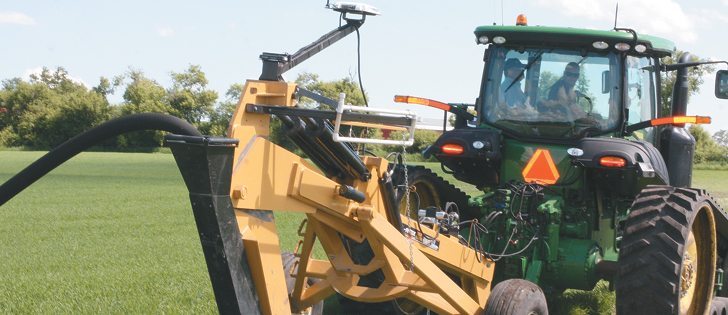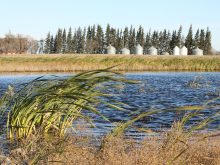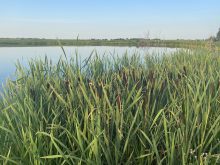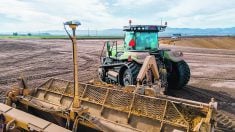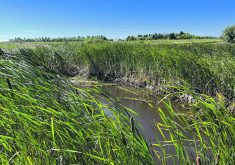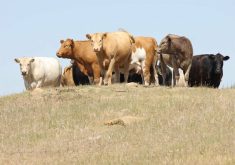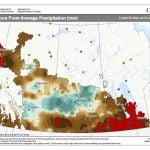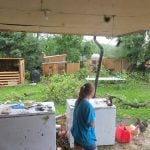LACOMBE, Alta. — Tired of seeing his best land not produce his best crops, Craig Shaw has started to install underground tile drainage on his Alberta farm.
“We were losing our best land,” said Shaw, who farms near Lacombe.
“We’re trying to get better crops over the low parts of our fields.”
Shaw and his neighbour, Dirk Drost, who co-own the tiling plow, believe it is the answer to the problem of their waterlogged fields.
“It’s a long-term investment,” he said. “Instead of renting more land, use what we have.”
Read Also

Parts of Prairies see one-third of normal rain in June
Parts of Prairies see one-third of normal rain in June
Drost also wants to use all the acres in his fields instead of bypassing the low spots each spring, especially in fields where he grows his high-value seed potatoes.
“Land values are sky high. We should utilize many of the acres we have already,” said Drost, who will start installing the tile this fall after harvest.
Shaw has installed six kilometres of tile, and water is already running out the ends into ditches.
He uses a combination of six-inch main line and four-inch perforated tile, covered in a type of sock to ensure that the sandy soil doesn’t block the perforations.
Tile drainage is common in other parts of Canada but rare in Alberta. Shaw expects that rising land prices will encourage more farmers in wetter regions to install tile.
“I anticipate seeing quite a bit of tiling happening in the Parkland area where land is wetter,” he said.
While the plow can lay tile 1 1/2 metres deep, Shaw aims to place the tile one into the ground. The computerized GPS system will adjust the depth depending on topography.
Shaw said engineered drawings aren’t required to figure out where to place the tile.
Producers need only an elevation map, a GPS and good knowledge of the farm’s low spots.
“It’s fairly straightforward.”
Shaw said special licenses aren’t required for tile drainage, but farmers must make sure they don’t harm neighbours’ land.
“It’s important to know where the water is going and not negatively impacting the neighbours lower down.”
Calvin Sargeant of Rimbey, Alta., also bought a tile plow this spring.
“There are too many low areas where there is no crop,” he said. “Land is getting expensive and hard to buy, so I better utilize what I’ve got.”



